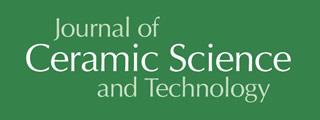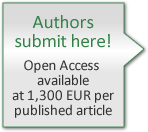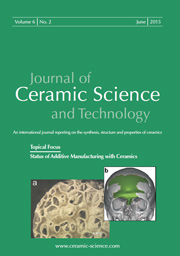Articles
All articles | Recent articles
The Effect of the Glass Phase on the Modulus of Rupture of High-Alumina Refractories
W. Yuan, Q. Zhu, C. Deng, H. Zhu
The State Key Laboratory of Refractories and Metallurgy, Wuhan University of Science and Technology, Wuhan 430081, P.R. China
received February 24, 2015, received in revised form April 10, 2015, accepted May 26, 2015
Vol. 6, No. 3, Pages 215-220 DOI: 10.4416/JCST2015-00009
Abstract
Owing to their high refractoriness and slag resistance, high-alumina refractories are widely used in the lining of steelmaking furnaces, glass furnaces and cement rotary kilns in high-temperature industries. The impurities in the raw materials react to form the glass phase, which can melt into liquid at high temperatures. The modulus of rupture of refractories depends intensively on the content and composition of the glass phase. In this work, the cold and hot modulus of rupture for high-alumina bricks were investigated by means of fitting based on different theories. The effect of the glass phase on the modulus of rupture was analyzed by combining the phase composition, morphology of fracture surfaces and porosity for high-alumina refractories.
![]() Download Full Article (PDF)
Download Full Article (PDF)
Keywords
Modulus of rupture, high-alumina refractories, glass phase
References
1 Li, N., Gu, H.Z., Zhao, H.Z.: Refractories, Metallurgical Industry Press, Beijing, 2010.
2 Budnikov, P.P.: The technology of ceramics and refractories. The M.I.T. Press, Massachusetts, 1964.
3 Routschka, G.: Pocket manual refractory materials: Basics, structures, properties, Vulkan-Verlag GmbH, Essen, 2004.
4 Tripathi, H.S., Ghosh, A., Halder, M.K., Mukherjee, B., Maiti, H.S.: Microstructure and properties of sintered mullite developed from indian bauxite, Bull. Mater. Sci., 35, [4], 639 – 643, (2012).
5 Abou-Sekkina, M.M., Abo-El-Enein, S.A., Khalil, N.M., Shalma, O.A.: Phase composition of bauxite-based refractory castables, Ceram. Int., 37, [1], 411 – 418, (2011).
6 Maldhure, A.V., Tripathi, H.S., Ghosh, A., Das, S.K.: Mullite-corundum composites from bauxite: effect of chemical composition, Trans. Indian Ceram. Soc., 73, [1], 31 – 36, (2014).
7 Aksel, C.: The effect of mullite on the mechanical properties and thermal shock behaviour of alumina-mullite refractory materials, Ceram. Int., 29, [2], 183 – 188, (2003).
8 Andrews, A., Mothle, T.S., Olubambi, P.A.: Strength behaviour of alumina based refractories after thermal cycling, J. Aust. Ceram. Soc., 49, [2], 47 – 51, (2013).
9 Xu, E.X., Zhong, X.C.: Bending stress-strain relationship of high alumina bricks at elevated temperatures, (in Chinese), Refract., 39, [4], 266 – 269, (2005).
10 Kopeykin, V.A., Poluboyarinov, D.N.: Phase composition of high-alumina ceramics, Refract., 1, [11 – 12], 452 – 457, (1960).
11 Serry, M.A., El-Maghraby, M.S., Salama, S.Z.: Shaped aluminosilicate refractories from egyptian raw materials, Am. Ceram. Soc. Bull., 85, [9], 9201 – 9206, (2006).
12 Amutha, R.D., Gnanam, F.D.: Sol-gel mullite as the self-bonding material for refractory applications. Ceram. Int., 26, [4], 347 – 350, (2000).
13 Dehghani, K., Allaire, C.: Changes in hot modulus of rupture with the characteristics of aluminosilicate refractories. In: Proceedings of 44th annual conference of metallurgists of CIM, Calgary, Canada, 2005, 247 – 258.
14 Xu, J.P.: The measurement of glass phase content in mullite, (in Chinese), Phys. Test. Chem. Anal. Part B: Chem. Anal., 43, [7], 605 – 606, (2007).
15 Mecholsky, J.J., Passoja, D.E., Feinberg-Ringel, K.S.: Quantitative analysis of brittle fracture surfaces using fractal geometry, J. Am. Ceram. Soc., 72, [1], 60 – 65, (1989).
16 Klug, F.J., Prochazka, S., Doremus, R.H.: Alumina-silica phase diagram in the mullite region, J. Am. Ceram. Soc., 70, [10], 750 – 759, (1987).
17 Shmitt-Fogelevich, S.P.: Change in phase composition of high-alumina refractories, Refract., 9, [11 – 12], 789 – 796, (1968).
18 Sharapova, V.V., Sereda, B.P., Boguslavskii, D.Y., Malyshev, I.P., Troyan, V.D., Troshenkov, N.A.: Prospects of the use of aluminosilicate refractories for aluminum electrolyzers. part 3. the role of the glass phase formed in the operation of aluminum electrolyzers, Refract. Ind. Ceram., 48, [6], 395 – 396, (2007).
19 Iqbal, Y., Lee, W.E.: Fired porcelain microstructures revisited, J. Am. Ceram. Soc., 82, [12], 3584 – 3590, (1999).
20 Carty, W.M.: Observations on the glass phase composition in porcelains, Ceram. Eng. Sci. Proc., 23, [2], 79 – 94, (2002).
21 Baspinar, M.S., Kara, F.: Optimization of the corrosion behavior of mullite refractories against alkali vapor via ZrSiO4 addition to the binder phase, Ceram-Silikáty, 53, [4], 242 – 249, (2009).
22 Sacks, M.D., Pask, J.A.: Sintering of mullite-containing materials: 1, effect of composition, J. Am. Ceram. Soc., 65, [2], 65 – 70, (1982).
23 Hamacek, J., Machacek, J., Kutzendorfer, J., Korsa, B., Fiala, J.: On the high temperature bending strength of castables, Ceram-Silikáty, 56, [3], 198 – 203, (2012).
24 Schnieder, J., Lynen, L., Traon, N., Tonnesen, T., Telle, R.: Crack formation and shape of fracture surface in tabular-alumina-based castables with addition of specific aggregates, J. Ceram. Sci. Tech., 5, [2], 131 – 136, (2014).
25 Bradt, R.C., Harmuth, H.: The fracture resistance of refractories, Refract. Worldforum, 3, [4], 129 – 135, (2011).
26 Terzic, A., Pavlovic, L., Milutinovic-Nikolic, A.: Influence of the phase composition of refractory materials on creep, Sci. Sinter., 38, [3], 255 – 263, (2006).
27 Xu, G.T., Diao, R.S., Du, H.G., Sun, X.W.: Study on erosion process of vanadium-titanium bearing slag with high alkali content on blast furnace lining, (in Chinese), Iron Steel Vanadium Titanium, 25, [2], 27 – 34, (2004).
28 Baran, G.R., Roques-Carmes, C., Wehbi, D., Degrange, M.: Fractal characteristics of fracture surfaces, J. Am. Ceram. Soc., 75, [10], 2687 – 2691, (1992).
29 Nagahama, H.: A fractal criterion for ductile and brittle fracture, J. Appl. Phys., 75, [6], 3220 – 3222, (1994).
30 Yuan, W.J., Zhu, Q.Y., Deng, C.J., Zhu, H.X.: Fractal analysis of fracture surfaces in refractories, China's Refract., 23, [1], 27 – 31, (2014).
Copyright
Göller Verlag GmbH


